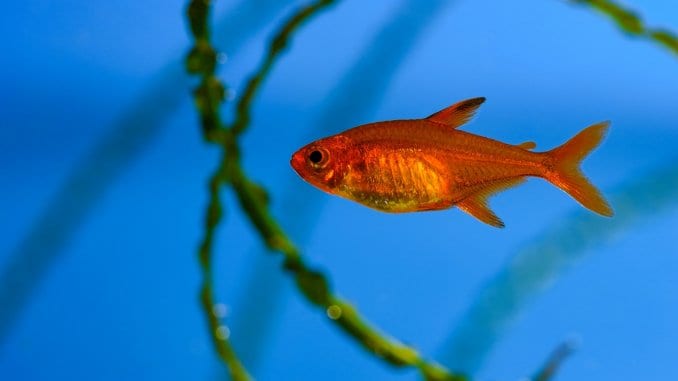
Tropical fish have risen in popularity over the last few years because of their striking appearance and playful personalities.
The Ember Tetra is an eye-catching fish that will light up any aquarium, and its temperament makes it a great choice for any community tank.
If you are looking for truly unique fish to join your aquatic family – look no further. They are easy to care for and look wonderful in groups. They are also a great chance to get creative with your tank setup!
This article will help you get to know all about this small and exciting fish.
TABLE OF CONTENTS
Ember Tetra Facts & Overview
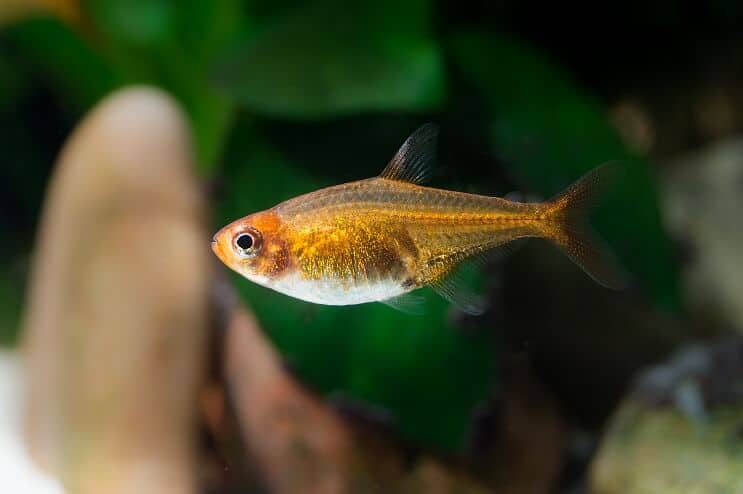
| Category | Rating |
| Care Level: | Easy |
| Temperament: | Peaceful |
| Color: | Bright orange to bright red |
| Lifespan: | Up to 2 years |
| Size: | 0.6–0.8 inch |
| Diet: | Omnivore |
| Family: | Characidae |
| Minimum Tank Size: | 10 gallons |
| Tank Setup: | Freshwater, heavily planted |
| Compatibility: | Peaceful community fish |
Sometimes called the Fire Tetra, the Ember Tetra (Hyphessobrycon amandae) is a small freshwater fish from the Characidae family, and is native to the slow-flowing rivers of Central-Western Brazil.
They come from one of the most diverse orders: Characiformes (which has almost over 2000 fish across 19 families). They are by far among the most impressively looking species.
Ember Tetra is a newly described species and was first found in the Mato Grosso State, in Central Brazil.
These fish are very popular with fishkeepers due to their bright appearance.
Even though classifying most fish in Characiformes is a challenging task, Ember Tetras can easily be distinguished by their bright, fiery appearance. They are active yet very peaceful fish. They are not a demanding fish when it comes to keeping either, partially due to the size.
It doesn’t matter how much experience you have with fishkeeping – they are a great choice for anyone.
In a well-kept tank, they can live up to 2 years.
Typical Behavior
Ember Tetra comes from a very forested and green region. This abundance of plants has been a major influence on their behavior. Plants, logs, and drifting wood usually serve as safe spots or breeding grounds in the wild.
Despite their size, these species are not timid.
In fact, they are active, fast swimmers, and quite playful. They can be found swimming through plants or hiding in them. You are also more likely to find them in the middle section of the tank (they rarely swim close to the bottom).
Even though Ember Tetras are active and not easily scared, they still require some time to adapt to a new tank. During that time you can expect fish to act strange or be overly cautious.
As shoaling fish, they are happiest when surrounded by other Ember Tetras. This also significantly reduces the time needed for adaptation. Not only that, but they look even more stunning in groups.
Their size is partially responsible for their peaceful and cautious behavior – imagine fish roughly 1 inch in length acting aggressively. That wouldn’t last long.
Appearance
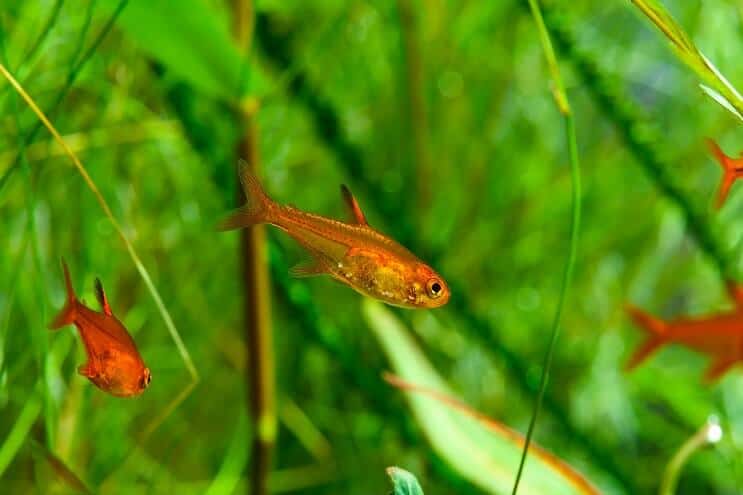
They are easy to identify thanks to their distinguishable appearance. They are fiery red, sometimes with a saturated orange gradient. Eyes also often have an orange rim.
Ember Tetra is small and reaches up to about 0.8 inches long.
Their body shape is a little elongated, with females’ abdomens being slightly oblate during the breeding period. Female fish usually also have a larger air bladder in comparison to males.
They have one merged anal fin, a relatively small dorsal fin, and a large caudal fin. Dorsal and caudal fins have a slightly light grey or black gradient. The upper part of the head, above the eyes and around the mouth, sometimes can be a reddish color.
Their body may seem slightly compressed towards the back – this allows them to move around more smoothly. Their scales are very compact and lie near each other. Due to this, they look slightly transparent.
Habitat and Ideal Tank Conditions
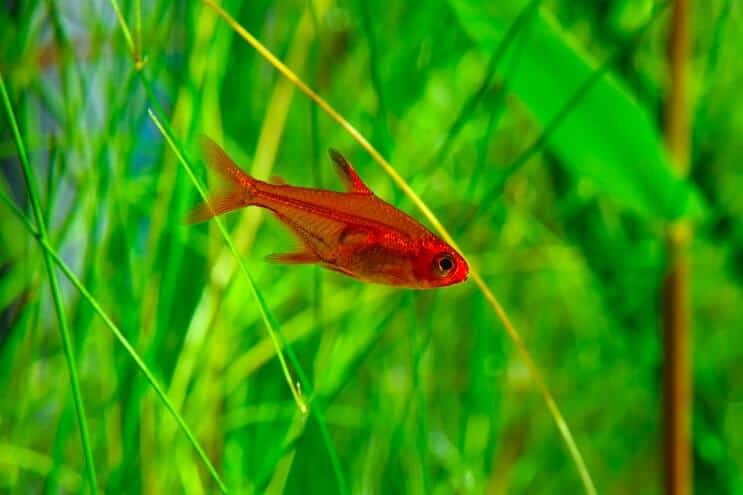
Ember Tetra is naturally found in slow-flowing rivers, lakes, and sometimes swamps. The areas where these species are found are heavily surrounded by plants and trees, most of which end up on the riverbed. This provides shelter for many fish and other animals.
In addition to shelter, it can serve as food or breeding grounds.
The soil on the riverbed is usually soft and dark, sometimes mixed up with light rocks or gravel. Rivers in those regions are usually quite heavily shaded by plants and trees.
Tank Conditions
Ember Tetra is freshwater fish that prefer small rivers with slow-flowing water.
The preferred pH would be in the range of 5.5–7 and water hardness should not exceed 18dH. The temperature of the water should be kept in the range of 68–82°F.
Because they are found in heavily planted areas and “green” riverbeds, you need to recreate this in the tank. Examples of plants you can keep with them include Java moss, Java fern, and Anacharis.
The important thing to keep in mind here is to do everything in moderation – place just enough plants for fish to hide and leave just enough space for them to swim around.
Try placing a few drifting or free-floating plants such as hornwort, and attach the rest firmly to the substrate.
Ember Tetras are usually found quite far away from the main streams, in slow-flowing tributaries. This means you should try to use a silent filtration and aeration system.
Such a setup will create the required amount of water movement while keeping it aerated and not disturbing them. You can use a regular sponge filter for that task.
There are no special requirements regarding the substrate but having a dark one is visually more impressive. Another way to enhance your tank is by adding dry leaves; after they decompose, they leave a whole bunch of beneficial bacteria.
The height of the aquarium depends on how many plants and/or decorations you want to fit in. Having all those decorations is nice, but not unless you must sacrifice free space in the tank for that. You can experiment with the aquarium environment, just bear the main points above in mind.
What Size Aquarium Do They Need?
Ember Tetras will need at least a 10-gallon tank. Despite their small size, they are active swimmers through the tank.
Tank Mates
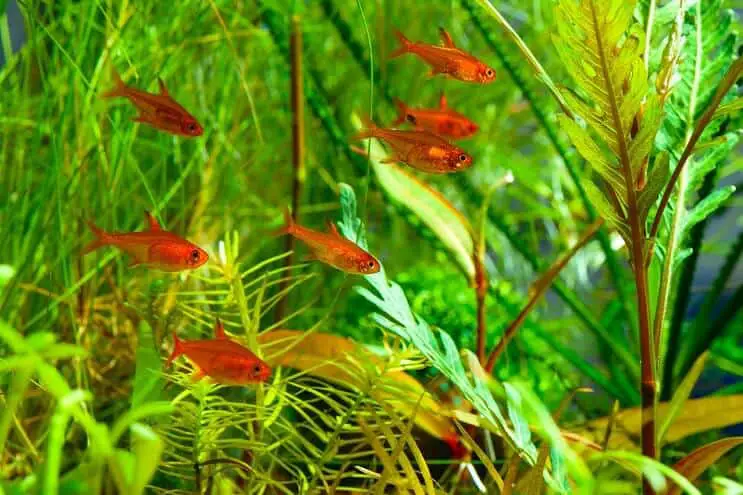
Ember Tetras are peaceful and friendly community fish.
They look great in community tanks, and rarely cause trouble. Due to spending most of the time in the middle layer, they rarely pick food from the bottom of the tank. That makes pygmy catfish a great tank mate choice.
Other than that, they are best kept with fish that have a similar temperament and size. For example, small corydoras or other peaceful fish from Characidae family.
Fish that prefer to swim in a different water layer also make good tank mates, such as hatchetfish, dwarf cichlids, rasboras, microrasboras, or neon tetras.
They should not be kept with large, aggressive fish (especially predatory ones). If you decide to introduce any non-fish inhabitants to the tank, consider the same points.
Most shrimps and snails are fine to keep with these fish, as long as they don’t destroy your plants.
Keeping Ember Tetra Together
Not only can they be kept together but it is recommended that you get at least 7-8. This will help them to feel more comfortable in the tank and will significantly decrease stress.
Diet
An Ember Tetra’s natural diet consists mostly of small invertebrates and other zooplankton. Sometimes you can find them grazing on plants, scraping microbe colonies that live there.
They can be happily feed on dry foods, either flakes or granules. In addition to artificial feeds, it is recommended to include live or frozen food (Aartemia, Daphnia or Grindal worms).
When it comes to putting the diet together, try to make it as diverse as possible. The feeding habits of Ember Tetras directly affects their appearance and color. Also keep their size in mind – when necessary grind the food up.
They should be given small portions two or three times a day. Plants in your aquarium that these fish can naturally graze upon are a great addition to their diet.
Healthy fish do not require any additional supplements. The best way to make sure your fish stay healthy is to keep a diverse diet. Being proactive, not reactive – is the best approach to feeding your fish.
Care
The Ember Tetra is a small freshwater fish, and just like other freshwater fish, they are very sensitive to changes in lighting or water temperature and acidity.
Despite what their size might suggest, they are quite healthy species and are not prone to any particular diseases.
Overfeeding is always an issue with small fish. It can cause many problems with their digestive system. If your fish acts strangely or looks exhausted – take a look at what they’re eating.
It can also be the quality of food that affects the health of your fish. So, if you feel that there is a problem with that, consider investing in slightly more expensive foods.
Consistent water renewal is essential for their health, as is consistent aeration and filtration.
Because the aquarium is so densely packed with plants, it requires constant attention. A tank full of algae or bacteria is not a very pleasing sight, so take time to clean it regularly.
Although it’s more harmful to the overall look of your aquarium than for the fish, excessive algae can cause trouble to inhabitants as well.
It’s hard to look after everything that goes on in your tank, and sometimes parasites manage to slip in. Parasitic diseases are usually expressed by bloating of some body areas or creamy dots on the skin. Dysfunctional shoaling behavior can in some cases signalize the presence of parasites as well.
Breeding
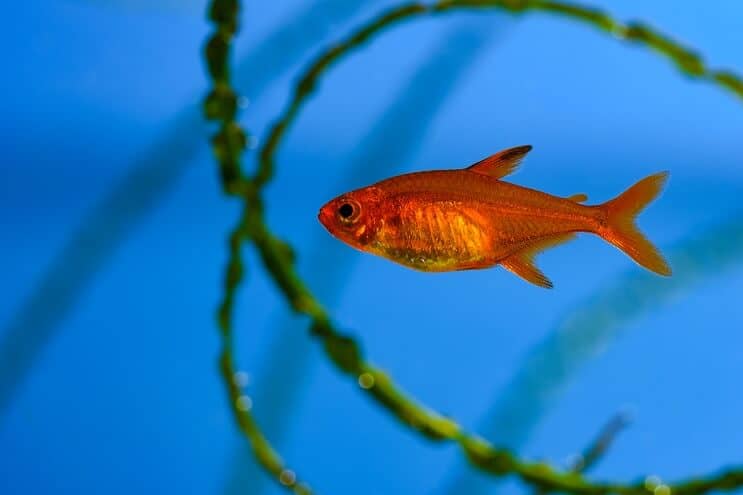
Breeding Ember Tetras is not a difficult task.
They are free spawning fish, which means that the parents do not care for the fry.
Under well-monitored conditions, spawning occurs frequently and doesn’t require any intervention. However, in order to increase the amount of fry this process should be controlled.
You need a small tank for the fry. Water should be taken from your main aquarium to optimize the acclimatization process for fry as well as parental fish. Lighting should be dimmed and the water should be weakly filtered.
To stimulate spawning you can try setting the pH close to neutral and keeping water temperature around 80-82°F. It is recommended to give fish live foods for 2 weeks prior to spawning. To prevent the parents from eating the fry, either places them in a separate tank or put a breeding mesh on the base of the tank.
Are Ember Tetras Suitable For Your Aquarium?
Are you looking for a beautiful, bright, and colorful fish to join your community tank? If so, then the Ember Tetra is perfect for you!
Their bright colors and unique appearance have made it one of the most popular tropical fish for community aquariums.
The only thing to keep in mind is their size and sensitivity to water parameters. Ember Tetras definitely shouldn’t be kept with big or aggressive fish.
This fish’s peaceful temperament allows them to easily fit into almost any kind of aquarium. It is also a great opportunity to try out a Nano set-up in a 10 gallon tank.
Are you considering an Ember Tetra for your aquarium? Let us know in the comments section below…

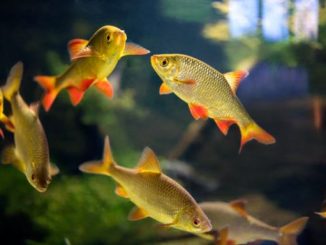
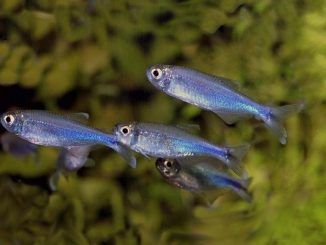
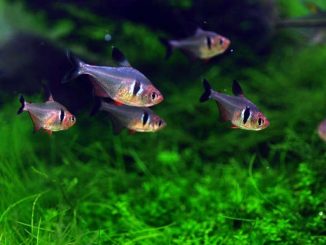
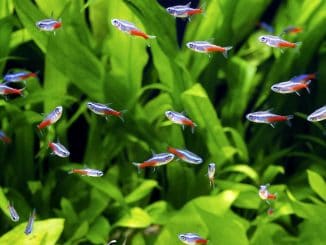
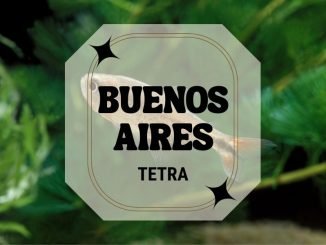
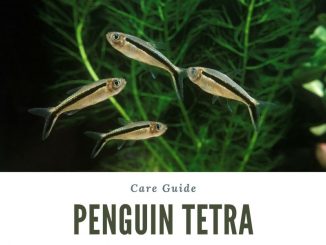
I’ve got a small school of ember tetra’s along with about 6 rasbora maculata that will be going into one of my nano tanks that I have just setup. I am also going to be putting in about 6-8 pygmy cory’s.
I have a group of 12 embers in a 20g planted tank with 6 green neons, habrosus cories and Crystal Red Shrimp. The tank is a real delight! This morning I discovered a largish baby ember <3 Just one. 🙂
I am having my 3 feet planted tank cycled, and I plan to have 15 ember tetras along with 15 cardinals Soon enough…And I hv got a few Red Cherry Shrimps in there as well
I have an empty 10 gallon that I plan to add live plants and a school of ember tetras to. I am hoping to add some kind of brightly colored snails too, any recommendation for what would work best?